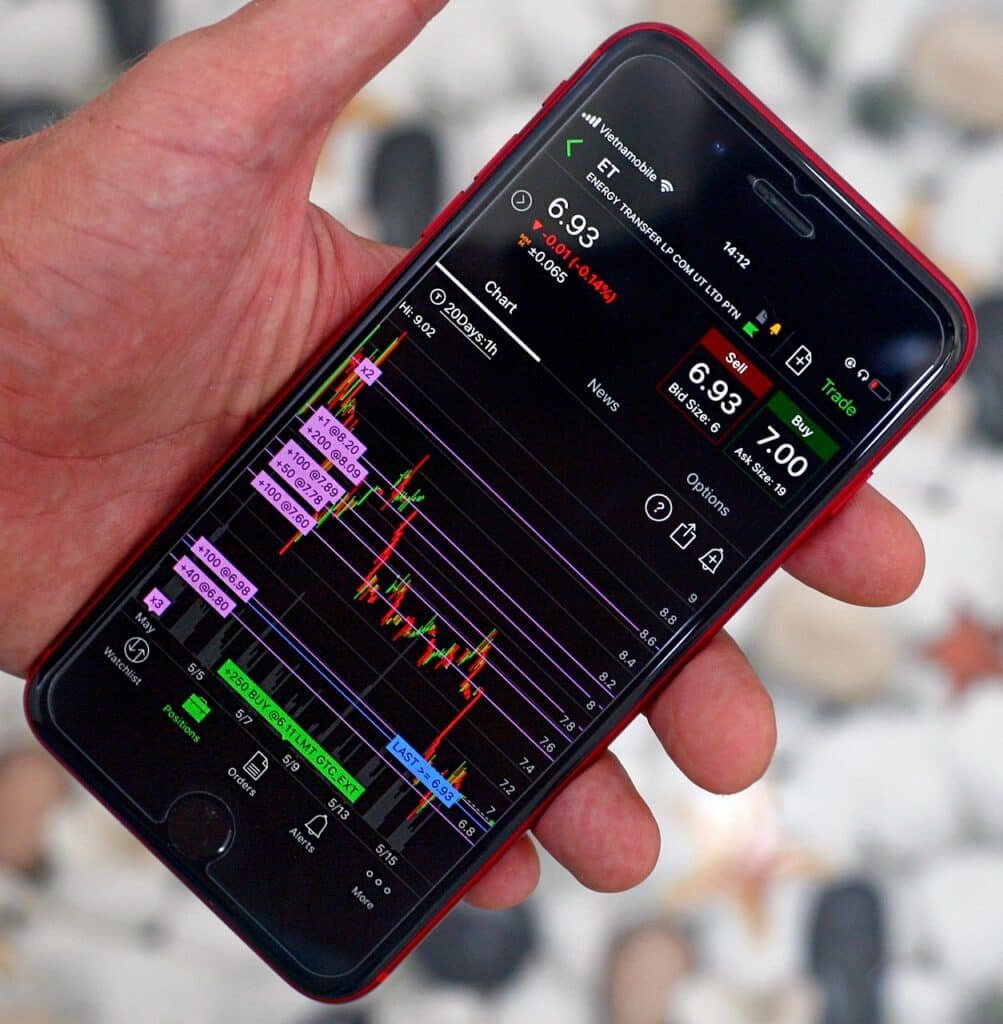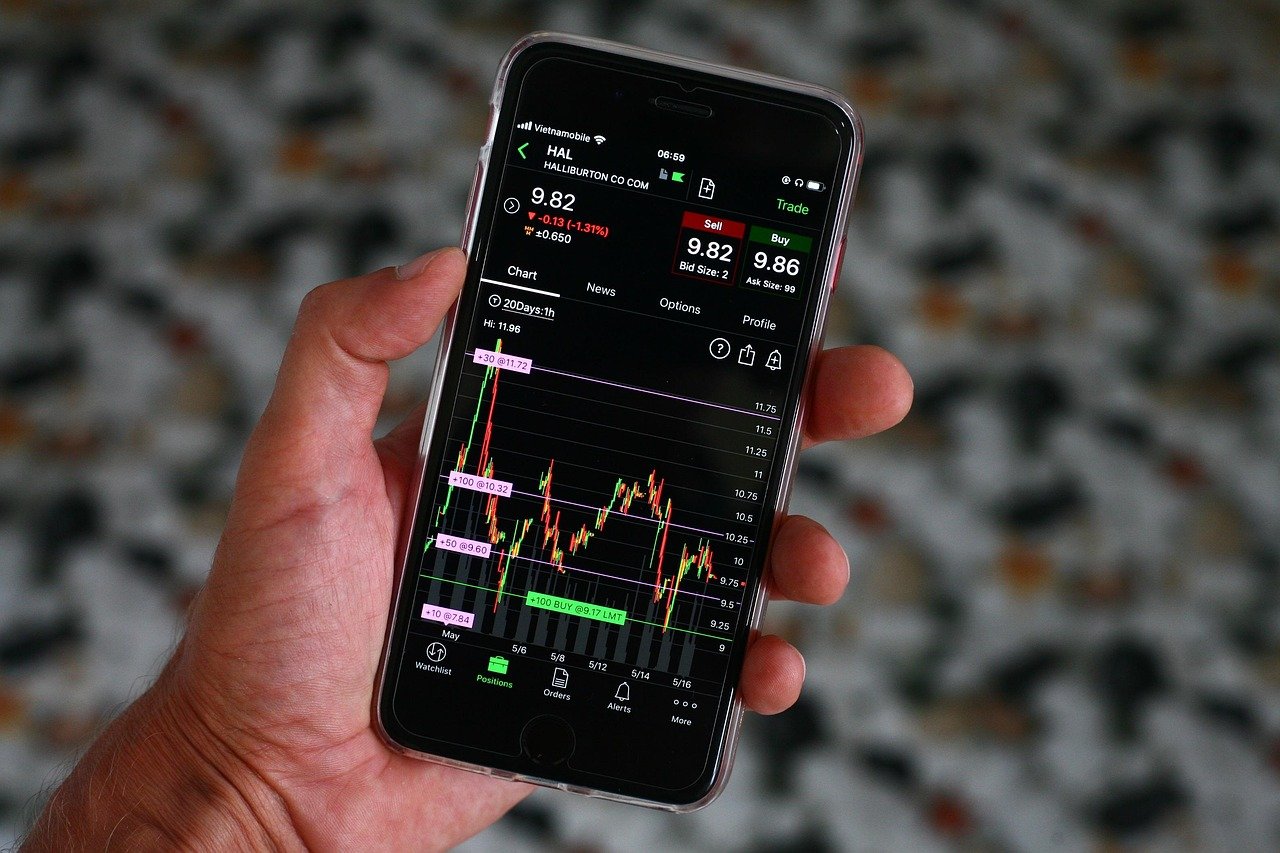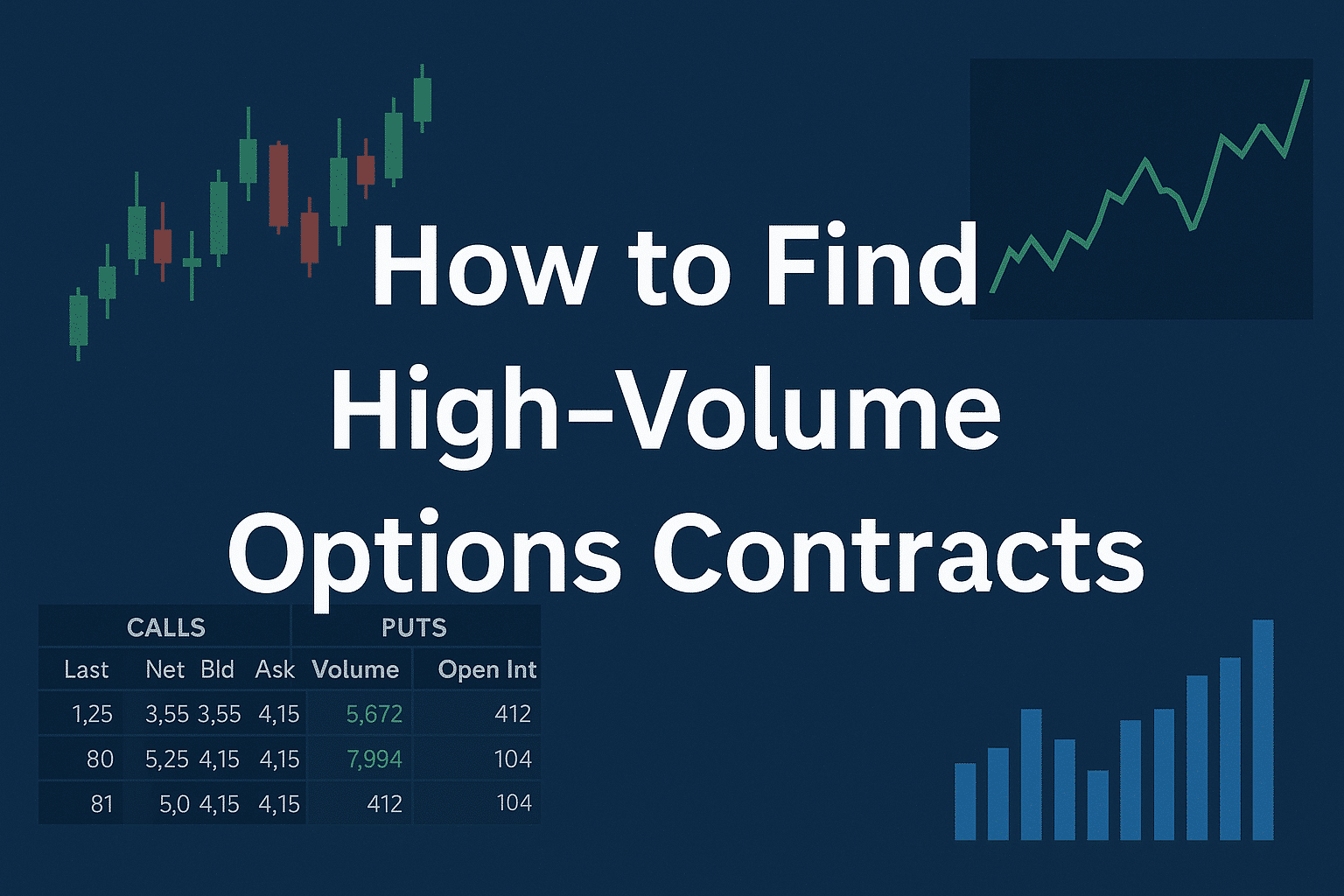Learn to use the put-call ratio for day trading to gauge market sentiment, with 10 easy strategies and examples in a beginner-friendly guide.
How to Use the Put‑Call Ratio for Day Trading (10 Best Strategies)
Ever wonder how day traders gauge if fear or greed is driving the market on a given day? One handy indicator they use is the put‑call ratio (PCR). This simple ratio compares how many put options (bets that prices will fall) versus call options (bets that prices will rise) are being traded.

In plain terms, it’s a number that reflects the market’s mood – a high PCR means traders are buying more puts (they’re fearful or bearish), while a low PCR means they’re buying more calls (they’re optimistic or bullish). Day traders can use this insight to make smarter decisions. In this article, we’ll break down 10 best ways to use the put‑call ratio in day trading. We’ll keep it simple (so even a 7th-grader can follow), with short paragraphs, examples, and easy tips. Let’s dive in!
What Is the Put‑Call Ratio (PCR)?
The put‑call ratio is a quick way to measure market sentiment (how traders feel about the market). It’s calculated as:
PCR = (Number of Puts Traded) ÷ (Number of Calls Traded)
For example, if in one day traders buy 1,000 put options and 500 call options, the PCR would be 2.0 (since 1,000 ÷ 500 = 2.0). A PCR above 1.0 means more puts than calls are traded, indicating bearish sentiment (more people hedging or betting on a drop). A PCR below ~0.7 means more calls than puts, indicating bullish sentiment (more bets on rising prices)cheddarflow.comdaytrading.com. A middle value (around 0.7–1.0) suggests a fairly balanced or neutral mood in the market.
Importantly, traders often view the PCR as a contrarian indicator. This means when the PCR is extremely high or low, it can hint that the crowd might be overreacting. If the PCR is very high (lots of fear), the market may be near a bottom (and could bounce up soon)cheddarflow.comdaytrading.com. Likewise, if the PCR is very low (lots of greed), the market might be near a top (and could drop soon)daytrading.com. In other words, when everyone is extremely bearish or bullish, a reversal often follows. In fact, the put‑call ratio is regarded as one of the most reliable contrarian measures of future market directioninvestopedia.com.
For instance, during the dot-com bubble peak in early 2000, traders were extremely bullish and the PCR for equities dropped to about 0.4, a record low at the timeen.wikipedia.org. Soon after, the market crashed, proving that such extreme optimism was a warning sign. On the flip side, in March 2020, amid a panic sell-off, the PCR spiked well above 1.0 (lots of put buying due to fear). That extreme fear coincided with a market bottom – the S&P 500 rallied strongly in the months aftercheddarflow.com. These examples show how PCR extremes can foreshadow turning points.
Tip: The put‑call ratio is easy to find. Exchanges like the Cboe publish PCR data daily (for example, the Cboe equity PCR might be 0.6 one day and 1.2 the next)ycharts.comycharts.com. You can check financial websites or your broker’s platform for the latest PCR value. If your trading app (like Robinhood) doesn’t show it directly, websites such as financial news pages or analytics tools often display current PCR figuresoptioncharts.io. Now, let’s explore 10 ways you can use the PCR in day trading.
10 Ways to Use the Put‑Call Ratio in Day Trading
1. Gauge Overall Market Sentiment Each Day
One of the simplest uses of the PCR is to get a quick read on market sentiment at the start of your trading day. Before you place any trades, check the overall PCR for the market (e.g. PCR of all options or a major index). If the PCR is leaning high (above 1), it tells you “Hey, traders are nervous today – more puts are trading than calls.” If it’s low (below 0.7), it signals “Traders are optimistic – calls are far outweighing puts.” This sentiment gauge can guide your day trading bias. For example, if the PCR is high (bearish sentiment) but you see the market stabilizing, it might hint at a contrarian buy opportunity. If the PCR is very low (bullish sentiment) during a morning rally, you might be cautious about jumping in long at inflated prices. In essence, PCR gives you the market’s mood in numbers, helping you decide to play offense or defense that day.
Tip: Compare the PCR to its recent norms. A PCR of 0.9 might be normal on most days. But if typically the PCR has been around 0.6 and suddenly today it’s 0.9, that’s a notable shift towards fear. Likewise, if it’s usually ~0.8 and drops to 0.5, traders are extra bullish. Context matters.
2. Identify Extreme Fear or Greed (Contrarian Signals)
The put‑call ratio shines most when it’s at extreme values. As a day trader, you can watch for these outlier readings to spot potential reversal setups. An extremely high PCR (significantly above 1.0) means traders are very bearish – they’re buying puts frantically (often for protection). This extreme fear can be a contrarian buy signal. The logic: if everyone is fearful, there may be few sellers left, and even a glimmer of good news could make prices bounce up. On the other hand, an extremely low PCR (say around 0.5 or lower) means excessive bullishness – traders are all-in with calls, or extreme greed. That can be a cue for a contrarian sell or short, since if everyone is overly optimistic, a lot of buying may have already happened and the market could be due for a pullbackdaytrading.com. As the saying goes, “be greedy when others are fearful, and fearful when others are greedy.” The PCR helps quantify “others’” fear and greed.
For example, suppose an index’s PCR usually ranges between 0.7 and 1.2. If you see it spike to 2.0 (very high) intraday due to some panic, a contrarian trader might start looking for a bottom-fishing opportunity (perhaps buying a dip) once price action confirms a bottom. Conversely, if the PCR plunges to 0.4 during a buying frenzy, a contrarian may tighten stop-losses on longs or even take a short-term short position, expecting a cool-off. Use extreme PCR readings as an alert that the market could be at an emotional extreme.
3. Confirm Trend Strength (Go With the Flow)
Not every trader is contrarian. You can also use the put‑call ratio to follow the prevailing trend. In day trading, this means using PCR to confirm the market’s momentum. For instance, if the market is rising and you also observe the PCR steadily decreasing (more calls being bought relative to puts), it indicates traders are growing confident in the rally – a supportive signal for the uptrend. You might decide to stay long or add to positions since both price and sentiment align bullishly. Similarly, if the market is in a decline and PCR is climbing (increasing bearish sentiment with more puts trading), that confirms widespread caution, supporting the downtrend’s strength. Trading with that sentiment (e.g., shorting rallies) might be prudent in this scenario.
In practice, you could track a short-term moving average of PCR (say the 5-day average) to smooth out noisedaytrading.com. If the average PCR is trending down while the market climbs, the bullish trend is backed by sentiment. As a day trader, when you see a pullback in such a bullish environment, you might be more confident to “buy the dip” knowing sentiment remains positive (low PCR). Conversely, in a confirmed bearish environment (rising PCR trend with falling prices), you’d be cautious with any long trades. Using PCR as a trend confirmation tool helps you trade in the direction of the market’s sentiment current, which can be more comfortable than fighting it.
4. Spot Potential Reversals Early
This approach is about catching trend changes. By monitoring the PCR for divergences or abrupt swings, day traders can get a heads-up that a market reversal may be brewing. Sometimes the PCR will start changing direction before the price does. For example, imagine the market is rallying but you notice over the day that the PCR, while still low, has started inching up from 0.6 to 0.8. This means even as prices rose, put buying picked up (perhaps some traders quietly hedging or betting on a turn). Such a PCR uptick during a rally could foreshadow weakness ahead – a possible reversal from bullish to bearish sentiment. Likewise, if the market has been dropping but PCR falls from 1.2 down to 0.9, that means traders have started buying more calls despite the slide – possibly betting on a rebound. This sentiment shift might signal the downtrend is nearing exhaustion.
Day traders can use these PCR clues to adjust quickly. If you spot a divergence (e.g., higher highs in price but higher PCR too – not usual in a true strong rally), it’s a caution sign that the trend may flip. You might take profits or set tighter stops on existing trades. When PCR swings sharply intraday (say from moderate to extreme), be alert – a sharp sentiment change often coincides with news or a key event that can reverse price direction. By keeping an eye on PCR movements throughout the day (not just the absolute value), you gain an early warning system for potential turning points.
5. Combine PCR with Other Indicators
The put‑call ratio is powerful, but it works best when used alongside other toolsinvestopedia.com. In day trading, a smart strategy is to confirm PCR signals with technical analysis or other sentiment indicators. For example, many traders pair PCR with the VIX (volatility index). The VIX measures expected volatility (fear) in the market. If you see an extremely low PCR (very bullish sentiment) and at the same time the VIX is very low, that double-signal might reinforce that complacency is high – a warning of a possible drop aheadcheddarflow.com. Alternatively, if PCR is high (bearish sentiment) and the market is near a known support level on the price chart, you have both a sentiment extreme and a technical level, which together strengthen the case for a bounce.
You can also incorporate indicators like volume, RSI, or moving averages. Suppose PCR indicates bearish sentiment, but a momentum indicator like RSI shows the market is oversold – together these suggest a potential upward reversal. Or if PCR is showing bullish sentiment while a market breadth indicator is positive, it supports the continuation of an uptrend. The key is confluence: don’t rely on PCR alone for buy/sell decisionscheddarflow.com. Use it to support or question what other indicators and price action are saying. This combined approach filters out false signals. For instance, a moderately high PCR by itself might not mean much, but a high PCR plus a bullish reversal candlestick pattern on the chart could give you confidence to go long. Always cross-check PCR insights with other evidence before acting.
6. Focus on Equity vs Index PCR (Know Where to Look)
It’s useful to understand which PCR data to use for your day trading. PCR can be measured for the whole market, for just equity options, or just index options. Equity PCR looks at stock options only, while Index PCR looks at index options (like S&P 500 options). Why does this matter? Index options are often used by big institutional investors to hedge portfolios (buying puts on indices as protection)investopedia.com. This tends to keep the index PCR higher on average (because of consistent put buying for hedges). In contrast, the equity-only PCR reflects more of the speculative trading on individual stocks, which many say is a “purer” read on retail trader sentimentinvestopedia.com.
For day trading, if you’re focused on broad market moves, you might check the total or index PCR. But if you want a clearer gauge of traders’ speculative sentiment, the equity-only PCR can be more insightful (since it’s less skewed by institutional hedging)investopedia.com. Some sources publish both figures. For example, on a given day you might see “Equity PCR = 0.55, Index PCR = 1.20”. That tells a story: regular traders are bullish on stocks (low equity PCR), but institutions are buying protection (high index PCR). As a day trader, you could interpret that as short-term optimism in stocks, but with a cautious backdrop. If you trade index futures or ETFs, lean more on the index PCR. If you trade individual stocks, check their sector or stock-specific sentiment if possible. Knowing which PCR to read ensures you’re aligning with the right crowd. In summary, be aware that not all PCRs are equal – choose the one that matches your trading focus (stock-specific vs overall market).
7. Monitor PCR Trend Over Time (Sentiment Momentum)
Don’t just look at the PCR in isolation for one day – also consider how today’s PCR compares to recent days. The trend or momentum of the PCR can reveal shifting sentiment that might not be obvious from a single data point. For example, if each day this week the PCR has been slightly lower than the last (0.9 → 0.8 → 0.7 → 0.6), it shows a steady increase in bullish sentiment over time. Even if any single day’s PCR isn’t extreme, the overall trend indicates optimism is growing. A day trader seeing that might trade with a bit more bullish bias (while being alert if things get too complacent). Conversely, a PCR that’s climbing day after day (say over a week it goes 0.7 → 0.85 → 0.95 → 1.1) tells you bearish sentiment has been building consistently. You might be more comfortable shorting rallies knowing sentiment momentum is pointing down.
One practical way to do this is by charting the PCR or using a short moving average. Many chart platforms allow you to pull up a PCR chart (e.g., symbol $CPCE for Cboe Equity PCR on some charting sites) and apply a moving average to it. Smoothed PCR trends filter out daily noise and highlight sentiment shiftsdaytrading.com. If you notice the smoothed PCR breaking out of a range or hitting multi-day highs/lows, it often precedes a market move. As a tip, watch for sentiment trend reversals: if PCR had been falling for a while but suddenly ticks up two days in a row, sentiment might be starting to sour (even if the market hasn’t dropped yet). That could be your cue as a day trader to prepare for a change in market direction. Monitoring the PCR’s trend adds a deeper layer to your day trading analysis beyond the immediate day’s number.
8. Use Volume vs Open Interest PCR (Short-Term vs Long-Term)
When looking at put-call data, you might come across two types of PCR calculations: one based on trading volume and one based on open interestcheddarflow.com. Volume PCR (the one we’ve mostly discussed) uses the number of options traded that day. Open Interest PCR uses the total number of outstanding option contracts (not just today’s trades). Each has its use. For day trading and short-term insight, the volume-based PCR is more relevant – it shows today’s mood and is more reactive to immediate market moves. For understanding a broader view (like how big money is positioned over time), the open-interest PCR can be useful since it reflects longer-term sentiment and positioning.
As a day trader, focus on volume PCR for real-time sentiment clues. For example, intraday you might see a news event cause a surge in put volume – the volume PCR will spike, telling you sentiment turned sharply bearish right now. Open interest won’t change as dramatically in the moment, as it’s a slower-moving metric. However, paying some attention to open interest PCR can help you gauge overarching sentiment. If open interest PCR has been high for weeks, it implies a lot of standing bearish bets in the market – a backdrop you should be aware of (e.g., rallies might face more skepticism). If open interest PCR is very low, the market as a whole is positioned bullishly, which could mean vulnerability if conditions change. In summary, use volume PCR for tactical day-to-day trades, and keep an eye on open-interest PCR for context. Often, they move similarly, but divergences can be insightful (e.g., one day volume PCR is low – bullish blip – but open interest PCR remains high, meaning long-term sentiment is still cautious). That might suggest any rally could be short-lived. Understanding these nuances helps you interpret PCR data more accurately for your trading timeframe.
9. Manage Risk by Reading PCR Warnings
The put-call ratio can serve as a risk management alert system. When you’re day trading, it’s easy to get tunnel vision on price charts, but PCR can warn you when the market’s sentiment might be getting out-of-whack, so you can adjust your risk. For instance, imagine you’re in a long position and things are going well – stocks are climbing and making new highs. If you check the PCR and see it’s extremely low (say 0.5 or below) indicating extreme optimism, you might decide to tighten your stop-loss or take partial profits. Why? Because such optimistic extremes often precede pullbacksdaytrading.com. In contrast, if you’re short and the market has fallen a lot, a very high PCR (e.g. 1.3+ with everyone buying puts) might prompt you to cover some of your short to protect profits, since a bounce could be neardaytrading.com.
Even if you’re not using PCR to initiate trades, let it be a safety radar. Many day traders set threshold levels, for example: “If PCR goes below 0.6, I’ll stop adding to any more longs and be cautious,” or “If PCR goes above 1.2, I’ll avoid opening new shorts.” It’s not a hard rule, but it keeps you aware that risk of reversal is higher. PCR can also guide position sizing – in a frothy low-PCR environment, you might trade smaller size or use tighter risk controls, whereas in a fearful high-PCR environment (where reversals upward can be sudden), you also stay nimble or ensure you’re not overexposed to a short. In summary, treat extreme PCR readings as a warning sign and adjust your trading plan accordingly to protect yourself.
10. Spot Opportunity in Specific Stocks or Sectors
While the overall market PCR is useful, you can sometimes find day trading opportunities by looking at the put-call data of specific stocks or sectors. Unusual PCR activity in a particular stock can hint at a potential move. For example, suppose a certain stock usually has a put-call ratio around 0.5 (more calls than puts typically), but today its PCR jumps to 1.5 (lots more puts than calls) – that’s a big shift in sentiment for that stock. Perhaps there’s bad news or investor concern. As a day trader, this could go two ways: it might be an opportunity to trade with momentum (short the stock, since everyone’s suddenly bearish for a reason), or a chance for a contrarian play if you believe it’s an overreaction (buy the stock expecting a bounce once panic subsides). The context (news catalyst, technical support levels) will guide which approach to take.
Similarly, you can check sector ETFs or indexes. If, say, the tech sector’s put-call ratio spikes relative to other sectors, it signals tech traders are more fearful – maybe tech has sold off hard, so a sharp rebound could be in the cards if fear is overdone. Some trading platforms and websites provide most-active options data and PCR by stockcheddarflow.comcheddarflow.com. Day traders sometimes scan for stocks with very high PCRs (bearish sentiment) to find potential rebound candidates, or very low PCRs (bullish frenzy) to find overbought candidates to short. Be careful to pair this with other analysis (like news or chart patterns) because a high PCR in a stock could be due to legitimate negative developments. But in cases of herd overreaction, exploiting these put-call extremes on individual names can be profitable. It’s a more advanced strategy, but it shows the versatility of PCR beyond just the broad market.
Tip: Not all brokers show individual stock PCR, but you can find it on certain financial websites (for example, Fintel or Barchart provide put/call ratios for specific stocksfintel.io). If a stock you’re day trading has options, it might be worth glancing at its PCR value. A sudden surge in that stock’s PCR could be a clue that sentiment shifted dramatically during the day – information that might not be obvious just from price action.
Comparing These Strategies
The 10 strategies above use the put-call ratio in different ways, but let’s compare them on a few key factors:
- Contrarian vs Trend-Following: Some methods involve going against the crowd at extremes (like Strategy 2, using PCR for contrarian signals when fear/greed is high). Others involve going with the prevailing sentiment (like Strategy 3, confirming a trend when PCR aligns with market moves). Knowing which approach you’re using is important. Contrarian plays (extreme PCR readings) can catch major reversals but are harder to time and riskier if you’re too early. Trend-following uses PCR to validate momentum and is generally a steadier approach, but you might miss the turning points.
- Ease of Use: Gauging daily sentiment (Strategy 1) or combining PCR with simple indicators (Strategy 5) is straightforward, even for beginners. These give you a feel of the market without complex analysis. In contrast, spotting intraday reversals via PCR divergences (Strategy 4) or analyzing stock-specific PCR swings (Strategy 10) is more advanced. They require more experience and real-time attention. A new trader might start with basic uses (like checking overall PCR each morning and noting extremes) and gradually incorporate the trickier techniques as they gain confidence.
- Timeframe & Scope: All these strategies aid day trading, but some have a shorter-term focus than others. Strategies like using volume PCR intraday, or quick sentiment checks, are very short-term – ideal for an intra-day context. Tracking PCR trends over several days or using open-interest PCR (Strategies 7 and 8) provides a slightly broader context, which can help swing traders or inform your day trades with a bigger picture. Also, some strategies focus on broad market sentiment (many of them use overall PCR), whereas Strategy 10 zooms into individual stocks/sectors. Depending on whether you trade index futures or individual equities, you might favor one over the other.
In practice, day traders often mix and match these approaches. For example, you might start your day with Strategy 1 (checking the mood) and 7 (seeing recent sentiment trend). If you spot an extreme, you consider Strategy 2 (contrarian play) but only act if confirmed by Strategy 5 (another indicator) or price action. Throughout the day, you use Strategy 3 to stay with a strong trend, but with an eye on Strategy 4 in case PCR signals a turn. The goal is to use the put‑call ratio as a multifaceted tool – it can warn you, confirm things for you, and reveal opportunities you might miss if you only watched price. By understanding these different uses, you can apply the right PCR-based tactic at the right time.
Conclusion
The put‑call ratio is a simple yet powerful indicator that day traders can use to read the market’s mind. It tells you when traders are fearful (high PCR) or greedy (low PCR), and from that you can glean when a trend might continue or when a reversal could be looming.
In this guide, we covered ten ways to leverage the PCR – from gauging daily sentiment to spotting extremes, confirming trends, and even finding opportunities in specific stocks. The key takeaway is that sentiment matters: markets are driven not just by earnings and charts, but by people’s emotions and expectations. PCR is like a thermometer for those emotions.
As a day trader, you’ll find the put‑call ratio especially handy for staying alert to shifts in psychology. Always remember, though, that no indicator is perfect. The PCR can flash false signals, and its timing isn’t always exact.
That’s why we emphasize using it in combination with other analysis and sound risk management. If the PCR is screaming “extreme,” pay attention – but still confirm with what price is doing. Over time, with practice, you’ll get a feel for interpreting the PCR’s hints. It can almost feel like you’re listening in on the market’s collective chatter about fear and greed.
In summary, using the put‑call ratio can make you a more informed and confident day trader. You’ll better understand when to push your trades and when to be cautious simply by reading this one number each day. Keep your approach balanced: use PCR insights to complement your strategy, not solely drive it. With the 10 strategies and tips discussed, you’re now equipped to harness the put‑call ratio like a pro. May it guide you to clearer decisions and successful trades – happy trading!
Please visit Academic broadcasting Platform for getting more information about option trading and tricks to increase your portfolio.








